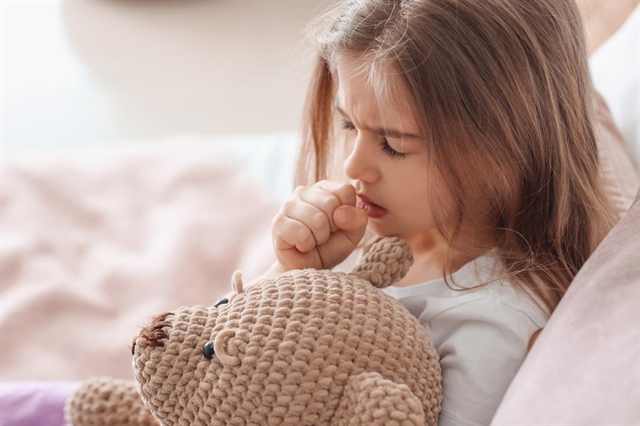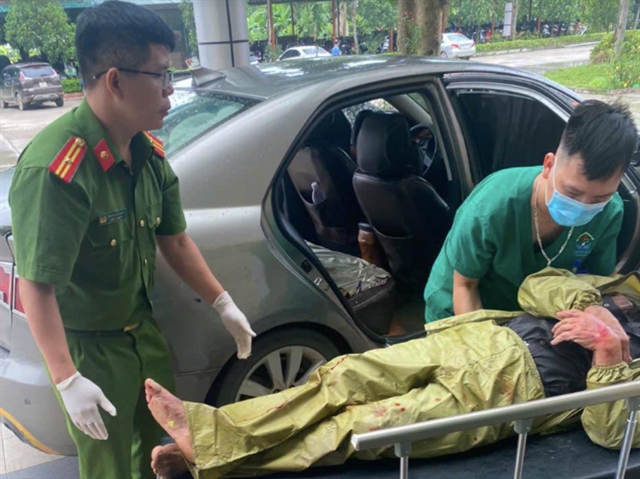 Life & Style
Life & Style

 |
| Dr Mattias Larsson. Photo courtesy of Family Medical Practice |
Dr Mattias Larsson*
Thủy, a usually vibrant seven-year-old girl, had a persistent dry cough for three weeks, was tired, had decreased appetite, headaches, and low fever of 38oC. Hằng, Thủy's mother, had taken her to local physicians and she had been treated with both cough syrup and antibiotics without any apparent effect except for diarrhea. As the mother was concerned and wanted a clear diagnosis, she took Thủy to Family Medical Practice for consultation.
 |
| Parents should consult clinics with capacity for differential diagnostics. — Photo shutterstock.com |
Coughing is one of the most common causes parents take their children to FMP. From the body’s point of view, coughing not a problem, but a solution! When irritants, such as mucus, foreign particles or pathogens enter the airways special receptors detect the irritant and a reflex response causes a forceful exhalation to expel the irritant, resulting in cough.
When examining Thủy, the doctor noticed that the respiratory rate was faster than expected for her age, and she had inward chest movements, indicating that the body had to struggle to get enough oxygen. In the base of the right lung there was a crackling sound, crepitations, indicating that it might be some infection.
When assessing symptoms you need to do a differential diagnosis between different causes. The first is to classify what kind of cough. Dry or productive with mucus? Force and frequency of coughing? Are there danger signs such as: High fever above 38,5oC? Difficulty or rapid breathing? In-drawings? Cyanosis with blue lips? Decreased appetite? Changes in consciousness?
What are the most common causes of coughing?
- Viral colds, the most common causes of childhood coughs, start with a runny nose that progresses to thicker mucus, possibly fever, usually resolves within a week with rest and symptomatic treatment.
- Bronchitis causes rapid breathing and chest in-drawings, is often viral, as RSV leading to high fever and respiratory distress in infants and young children. Treated with inhalation medication.
- Asthma causes airway restriction, cough, and difficulty breathing.
- Pneumonia presents with high fever, persistent cough and breathing problems, diagnosed with clinical evaluation, X-ray and blood tests, is often caused by bacteria that require antibiotics.
- COVID-19 causing cough, fever and respiratory symptoms, usually milder in kids than adults.
- Streptococcal Tonsillitis causes severe sore throat, pain when eating and drinking, cough and. Diagnosed with rapid strep-A test and treated with antibiotics.
- Allergic reactions trigger long-term coughing with transparent mucus, often also itchy eyes and runny nose. No fever. Managed by reducing exposure (pollen, mite, pollution,... ) and treated with antihistamine.
- Tuberculosis (TB), characterised by persistent cough, sometimes with blood, along with fever, weight loss and fatigue. Timely diagnosis and treatment is crucial.
- Whooping cough (Pertussis) causing severe coughing fits and often followed by a distinctive "whooping" sound during inhalation. Vaccination plays a vital role in prevention.
- Croup, presenting as a barking cough, hoarseness, and noisy breathing due to swelling of the upper airway. It is typically a viral infection and may require medical attention.
- Influenza A causes high fever, respiratory symptoms and body aches. Early diagnosis allows treatment with oseltamivir. Annual flu vaccination is recommended.
- Legionellosis, caused by the Legionella bacteria, starts with high fever, shivering, dry cough, breathing difficulties, chest pain, muscle aches and confusion, diagnosed with blood test, PCR. Treatment with antibiotics.
As Thủy had persistent coughing, rapid breathing and crepitations, an X-ray was performed that showed infection in the lung. Blood tests indicated a bacterial infection, and a few hours later a rapid PCR test identified the culprit: Mycoplasma pneumoniae. Consequently, the correct antibiotic treatment was prescribed.
But why did Thủy not respond to the prior antibiotic treatment? That’s because Mycoplasma pneumoniae is an intracellular bacterium that does not respond to the most common antibiotics.
A child's cough can result from various causes, ranging from minor irritations to severe infections. Caregivers should be observant for danger signs such as rapid breathing, inward chest movements and persistent fever. Consulting a clinic with capacity for differential diagnostics is essential for an accurate diagnosis and appropriate treatment. Family Medical Practice
*Dr Mattias Larsson is a paediatric doctor at Family Medical Practice and associate professor at Karolinska Institutet and has a long experience in research on infectious diseases. He has worked with the Oxford University Clinical Research Unit and the Ministry of Health of Vietnam. He is fluent in English, Swedish, Vietnamese, German, and some Spanish.
Visit Family Medical Practice Hanoi 24/7 at 298I P. Kim Mã St, Kim Mã Ward, Ba Đình Dist.
To book an appointment, please call us at (024).3843.0784 or via Whatsapp, Viber or Zalo on +84.944.43.1919 or email hanoi@vietnammedicalpractice.com.
FMP’s downtown location in Hồ Chí Minh City is in Diamond Plaza, 34 Đ Lê Duẩn St, Bến Nghé Ward, District 1, and 95 Đ Thảo Điền St, District 2. Tel. (028) 3822 7848 or email hcmc@vietnammedicalpractice.com.




